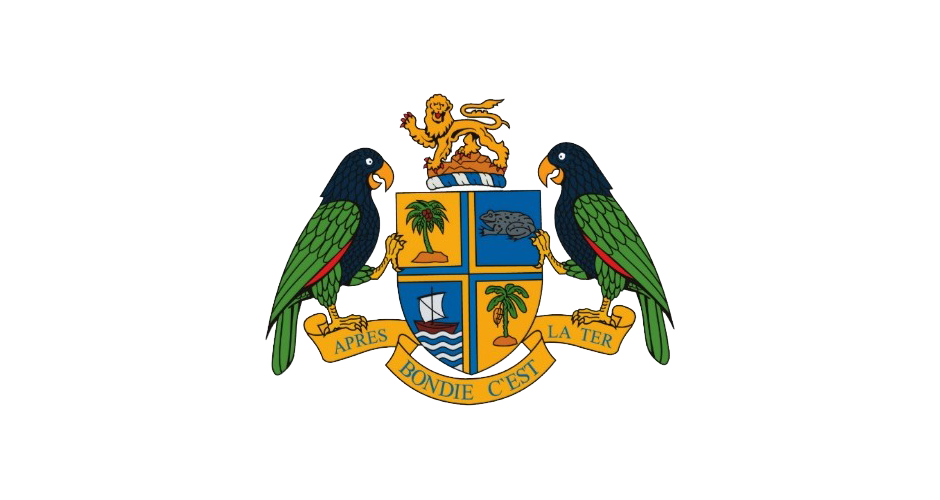
Sky Conditions
- Clear Skies
- No cloud cover
- Fair
- Cloud cover is 2 oktas or less of low and or medium clouds for most of the time with isolated light rainfall or no rainfall. Term can be used both for day and night time
- Mainly Fair
- Generally fair (2 oktas or less) interspersed by brief periods of partly cloudy to cloudy skies (3 oktas or more) with isolated light rainfall or no rainfall. Term can be used both for day and night time
- Sunny
- Cloud cover 2 oktas or less being sunny for prolonged periods with isolated light rainfall no rainfall
- Partly Cloudy
- Cloud cover for the greater part of the time averages 3 to 4 oktas of low and or medium clouds or dense high level clouds of 5 oktas or more, interspersed with brief periods of fair or cloudy skies. Periods of isolated light or moderate showers are likely or no rainfall
- Mostly Cloudy
- Cloud cover of 5 oktas or more interspersed with brief periods of fair to partly cloudy skies. Shower activity likely to be light to isolated moderate
- Cloudy
- Cloud cover is greater than 4 oktas and shower activity likely to be light to moderate and isolated heavy
- Overcast
- Cloud cover of 8 oktas and shower activity likely to be light to moderate interspersed by heavy periods
- Increasingly Cloudy
- Cloud cover generally increasing from fair or partly cloudy to cloudy or overcast
- Decreasingly Cloudy
- Cloud cover generally decreasing from overcast or cloudy to partly cloudy or fair
- Showers
- Precipitation, often short-lived and heavy, falling from convective or towering clouds. A shower is characterized by its sudden beginning and ending and generally by large and rapid changes of intensity
- Rain
- Precipitation of liquid water particles in the form of drops of more than 0.5 mm in diameter
- Spatial Coverage
- Isolated – Rainfall occurring across 10% or less of the forecast area
Few scattered – rainfall occurring over 10% to 30% of the forecast area
Scattered – rainfall occurring over 30% to 60% of the forecast area
Showers (no description) – rainfall covering greater than 60% of the forecast area
- Temporal Coverage
- Brief – Shower event that occurred for 10 minutes or less
- Periods of showers/rain – several instances of shower events throughout the forecast period
Conditions Associated with Wind
- Breezy
- Wind speeds averaging 12 – 18 kts (22-33 km/h)
- Windy
- Wind speeds averaging 19 kts (35 km/h) and higher
- Low Level Jet
- Wind speed in the lower levels of the atmosphere (surface-10,000ft) averaging 25kts (46 km/h) or higher
- Upper Level Jet
- Wind speed in the upper levels of the atmosphere of 50 kts (93 km/h) or higher
- Moisture Convergence
- Moisture convergence – Is the advection or transport of moisture into a fixed region such as the Lesser Antilles that usually promotes an increase in moisture levels and the potential for shower activity. Moisture advection is common along cold fronts or any other low-level boundary that causes general convergence such as the land mass of mountainous islands
- Advection
- Transport of water or air along with its properties (e.g. temperature, moisture) by winds or currents
- Subsidence
- Slow descent or sinking of a mass of air, over a wide area, generally accompanied by horizontal divergence or air moving away from a point, in the lower layers. The subsiding air is compressed and warmed usually increasing stability or lessening the potential for shower activity
Weather Systems
- High Pressure System
- An area of higher pressure relative to the surrounding region identified with a clockwise circulation in the northern hemisphere and a counterclockwise circulation in the southern hemisphere. Also, defined as an anticyclone
- Ridge
- An elongated area of relatively high pressure that is typically associated with an anti-cyclonic wind shift
- Low Pressure System
- An area of low pressure relative to the surrounding region identified with counter-clockwise circulation in the northern hemisphere and clockwise in the southern hemisphere. Also, defined as a cyclone
- Trough
- A trough is an elongated area of low pressure. Troughs develop at varying levels of the atmosphere and can be separated as:
- Low level trough – up to 10,000ft
- Middle level trough – up to 18000ft
- Upper level trough – above 18000ft
- Tough System
- Term used to describe a trough that is manifested from the surface through to the upper levels of the atmosphere
- Tropical Wave
- A trough or cyclonic curvature maximum in the trade-wind easterlies. (A tropical wave may be differentiated from the normal trough based on where and how they are usually formed and their movement)
- Tropical Disturbance
- A discrete tropical weather system of apparently organized convection originating in the tropics or subtropics that maintain its identity for 24 hours or more
- Potential Tropical Cyclone
- A term used to describe a disturbance that is not yet a tropical cyclone, but which poses the threat of bringing tropical storm or hurricane conditions to land areas within 48 hours
- Tropical Depression
- A tropical cyclone in which the maximum sustained surface wind speed is 33 kt (38 mph or 62 km/hr) or less
- Tropical Storm
- A tropical cyclone in which the maximum sustained surface wind speed ranges from 34 kt (39 mph or 63 km/hr) to 63 kt (73 mph or 118 km/hr)
- Tropical Storm Watch
- An announcement that sustained winds of 34 to 63 knots (39 to 73 mph or 63 to 118 km/hr) are possible within the specified area within 48 hours
- Tropical Storm Warning
- An announcement that sustained winds of 34 to 63 knots (39 to 73 mph or 63 to 118 km/hr) are expected somewhere within the specified area within 36 hours
- Hurricane
- A tropical cyclone in which the maximum sustained surface wind is 64 kt (74 mph or 119 km/hr) or more
- Major Hurricane
- A hurricane that is classified as Category 3 or higher
- Hurricane Watch
- A Hurricane Watch means that hurricane conditions are possible within the watch area. A watch is typically issued 48 hours before the anticipated first occurrence of tropical-storm-force winds, conditions that make outside preparations difficult or dangerous
- Hurricane Warning
- A Hurricane Warning means that hurricane conditions are expected somewhere within the warning area. A warning is typically issued 36 hours before the anticipated first occurrence of tropical-storm-force winds, conditions that make outside preparations difficult or dangerous. Preparations to protect life and property should be rushed to completion
- Eye
- The roughly circular area of comparatively light winds that encompasses the center of a severe tropical cyclone. The eye is either completely or partially surrounded by the eyewall cloud. The eye usually experiences little or no precipitation
- Rapid Intensification
- An increase in the maximum sustained winds of a tropical cyclone of at least 30kt (56km/h) in a 24-h period
- Feeder Bands
- This term is used to describe spiral-shaped bands of convection surrounding and moving toward the center of a tropical cyclone. Same as inflow bands
- Inter-Tropical Convergence Zone
- A zonally elongated axis of surface wind confluence of northeasterly and southeasterly trade winds in the tropics
- Fronts
- The interface or transition zone between two air masses of different density. Density depends on temperature and moisture content. Fronts either lie along shear lines or can lag behind them
- Shear Line
- It is an area of directional wind confluence (coming together) along the tail end of a surface front or a line or narrow zone across which there is an abrupt change in the horizontal wind component parallel to this line
- Flood
- The term flood is generally defined as a rise in the water level of a stream or water body to a peak from which the water level recedes at a slower rate
- Flash Flood
- A flash flood is a sudden local flood of great volume and short duration which follows within a few (usually less than six) hours of heavy or excessive rainfall, or due to dam or levee failure. Saturated soils, steeply sloping highland terrains and narrow valleys or ravines which hasten runoff also promotes flash floods
- Flood/ Flash Flood Watch
- A Flash Flood Watch means that flash flooding is possible
- Flood/ Flash Flood Warning
- A Flash Flood Warning means that flooding is already occurring or will occur during the warning period
- Small Craft Warning
- A small craft Warning means that winds-speeds of 25 knots (46km/h) or higher and/or seas of 3m (10ft) or greater are forecast to affect the marine area
- High Surf Advisory
- A High Surf Advisory is issued when breaking wave action poses a threat to life and property within the surf zone
- Marine Conditions (Waves/Swells)
- Slight: 0.5 -1.3m / 1 to 4 feet
Moderate: 1.3 – 2.5m / 4 to 8 feet
Rough: 2.5 – 4m / 8 – 12 feet
Very Rough: 4.0 – 6.0m / 13 to 20 feet
High: 6.0 – 9.0m / 20 to 30 feet
Dangerous: >9.0m / 30.0 feet
- Storm Surge
- An abnormal rise in sea level accompanying a hurricane or other intense storm and whose height is the difference between the observed level of the sea surface and the level that would have occurred in the absence of the cyclone. Storm surge is usually estimated by subtracting the normal or astronomic high tide from the observed storm tide
- Landslide
- Generally describe the downslope movement of rock, debris or soil. Landslides can be initiated in weak or compromised slopes by heavy or prolonged rainfall, stream erosion, changes in ground water, earthquakes, volcanic activity and disturbance by human activities
- Rockfall
- Rock falls are abrupt, downward movements of rock or earth, or both, that detach from steep slopes or cliffs
- Vigilant
- Keeping careful watch, be alert, be on the lookout for deterioration in weather conditions that may affect you or create difficulties








